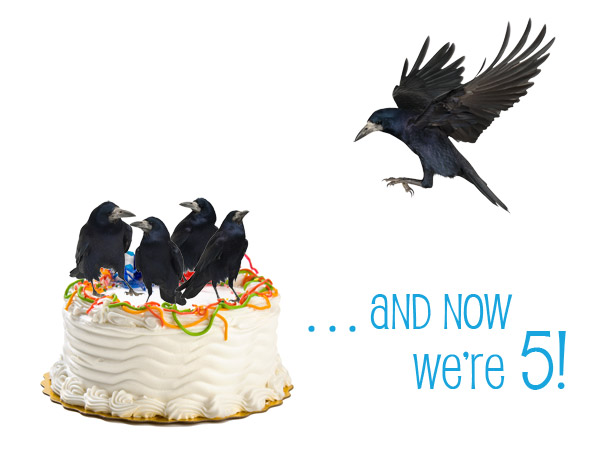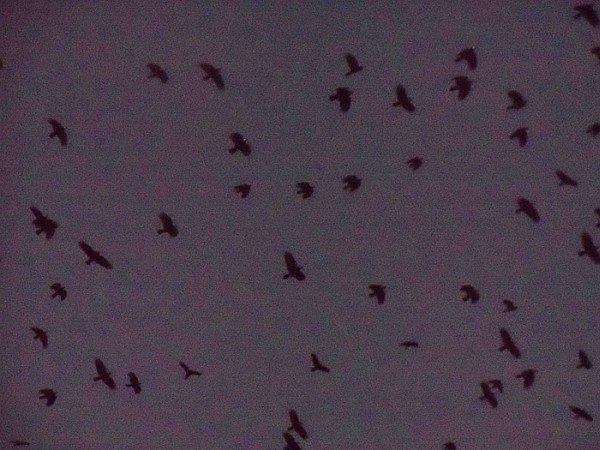
Look who showed up this morning! It’s a British Invasion and they’re singing their own version of the Beatles Birthday song,
“They say it’s your Bird-thday
We’re gonna have a good time…
Yes we’re going to a party party.
Yes we’re going to a party party.”
Hello, Rooks! Thanks for coming all the way from Britain to celebrate Outside My Window’s 5th birthday. Do you have any requests?
“Yes, we’ve been reading your blog and learning a lot of useful stuff about birds, weather, plants, flowers, and interstellar space. Now we have 5 questions.”
1. What numbers describe Outside My Window?
That’s easy. The blog averages 577 visitors a day and creates 22% of all traffic to WQED.org. (A big THANK YOU to my readers!)
2. Which posts had the most readers in the past year?
Dorothy wins the prize. Top readership goes to Peter Bell’s amazing pictures of Dorothy attacking a bald eagle over Schenley Plaza. Last year’s Falcon or Hawk? continues to win the top prize from Google search.
3. What spawned the most comments?
When National Audubon posted Have You Seen Any Blue Jays Lately? on their Facebook page it generated 63 comments, but the stand-alone prize goes to Mouse In The House with 26. The mouse struck a cord, eh?
4. What were your favorite photos in the past year?
Wow, that’s hard! Here are three: Peter Bell’s Peregrine versus Bald Eagle (of course Dorothy’s always a favorite), Steve Gosser’s Chick at Tarentum and Chuck Tague’s Walking On Air.
5. Which posts were your personal favorites?
Morning Glory clouds and Move-In Day taught me the most, but I have to say that my favorite was the coming home story of Beauty, the peregrine queen of Rochester, New York in Whose Egg Is This???.
“Oooooooo, peregrines!,” say the rooks, “We’re afraid of peregrines!”
Sorry, guys. In compensation I’m letting you eat the entire cake. (Now that they’re standing on it, it’s theirs!)
(party rooks by Joan Guerin)
p.s. Do you have a favorite post? A suggestion for new topics? Leave a comment and let me know.



